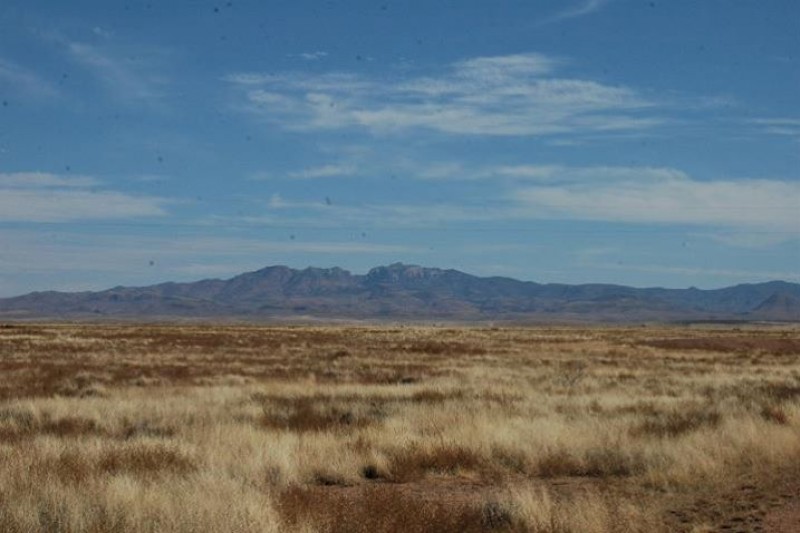
Photo: AlBradenphoto.com
By Mark Glover, Big Bend Sierra Club
The Federal Environmental Regulatory Commission (FERC) announced on July 24 that an environmental assessment must be carried out and studied for the full length of the 143-mile Trans Pecos Pipeline proposed by Dallas-based Energy Transfer Partners (ETP) that cuts through the Big Bend region.
ETP had attempted to limit Federal review of the pipeline to just a 1,093-ft stretch underneath the Rio Grande River. The FERC announcement represents a relatively small procedural setback for the energy company’s plans to build the controversial methane gas export project, but an opportunity for residents and businesses in the Big Bend area, as well as citizens everywhere who want to protect the wilderness of the Big Bend area, to raise issues with the project.
Environmental attorney David Frederick filed comments on behalf of the Big Bend Sierra Club asking for an environmental impact statement (EIS) regarding the cumulative impacts of the entire proposed pipeline route as opposed to ETP’s determination that it only had to consider the 1093-foot Rio Grande water crossing and embankment area near the town of Presidio. DC-based attorney Carolyn Elefant also filed FERC comments for the Big Bend Conservation Alliance (BBCA).
Area opponents of the pipeline, including the Big Bend Sierra Club, BBCA, and Defend Big Bend were optimistic about the FERC decision.
“There is nothing extraordinary about the FERC decision. They are applying the law. But this is a big deal for us,” said Coyne Gibson, a volunteer board member of the BBCA.
 In a public letter to Congressman William Hurd, FERC Chairman Norman C. Bay referred to the National Environmental Policy Act (NEPA), stating that, “as part of our commitment to NEPA, Commission staff will require Trans-Pecos to provide information regarding the environmental impacts of the planned upstream pipeline facilities to include in the cumulative [20150723-0007 FERC PDF (Unofficial)] impacts analysis. This will be part of the environmental assessment prepared for the proposed border-crossing export facilities, which will be issued for public comment.”
In a public letter to Congressman William Hurd, FERC Chairman Norman C. Bay referred to the National Environmental Policy Act (NEPA), stating that, “as part of our commitment to NEPA, Commission staff will require Trans-Pecos to provide information regarding the environmental impacts of the planned upstream pipeline facilities to include in the cumulative [20150723-0007 FERC PDF (Unofficial)] impacts analysis. This will be part of the environmental assessment prepared for the proposed border-crossing export facilities, which will be issued for public comment.”
The FERC is giving area proponents and opponents until August 24 to submit both expert and citizen comments on what environmental and cultural impacts the pipeline will have on the Big Bend area. The earlier June 30 FERC deadline generated more than 300 comments, an overwhelming majority of which were in opposition to the pipeline.
“We believe that the detrimental impact of the pipeline on the Big Bend area will far outweigh any benefits,” said Big Bend Sierra Club spokesperson Dr. Theron Frances. “The pipeline represents more hydro-carbon infrastructure at a time when we should be developing solar and wind. Climate change is humanity’s biggest challenge today.”
Rita Beving, a volunteer with the Sierra Club who conducted an organizing workshop with the Big Bend group, added that the proposed pipeline adds several other unacceptable risks. “What was incredulous about the application ETP submitted was their total avoidance of acknowledging the earthquake risks in the region. ETP stated there had not been any significant earthquakes within 50 miles in 50 years of the Presidio Crossing on the Rio Grande. Though that is technically true, this pipeline would travel 143 miles to this crossing through the two worst earthquake sites in Texas, where a 6.7 earthquake occurred in Valentine and another in Alpine at 5.7. The proposed ETP pipeline routes within 1.5 miles of Alpine. When the 5.7 Alpine earthquake occurred in 1995, gas and water lines ruptured, chimneys and walls fell, landslides occurred, and mountain tops toppled – just think what an earthquake could do to a 42-inch pipeline operating at 1440 psi.”
The Big Bend Sierra Club is currently raising funds to cover the attorney’s fees for their initially filed comments at http://www.gofundme.com/bbsierraclub.
According to BBCA’s Gibson, the environmental assessment will take about six months and precedes an Environmental Impact Study that could take up to two years if the FERC deems it necessary.
Theron noted that citizens interested in making public comments to FERC in opposition to the pipeline can e-file their comments at efiling@ferc.gov. A paper copy of your comments can be submitted by mailing them to:
Kimberly D. Bose, Secretary
Federal Energy Regulatory Commission
888 First Street NE, Room 1A
Washington, DC 20426
It is critical in your comments to reference the pipeline’s project docket number “CP15-500-000” with your submission. For FERC assistance, contact staff at (202) 502-8258.
